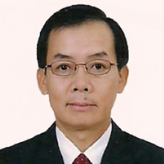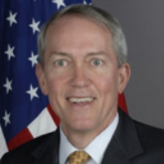Laos
A quiet, landlocked Buddhist nation in Southeast Asia, Laos is a true backwater. Many of the country’s political and historical developments have been the result of the ripple effects of events in neighboring countries: Thailand is its “cousin” to the west; China, the monster to the north; and Vietnam, the tumultuous and war-ravaged nation to the south. Communism reached Laos after World War II, took hold in the 1970s, and has yet to leave. Only half of Laos’ population of about 6 million is ethnically Laotian. The rest belong to one of about 70 different ethnic groups and tribes. Laos is the world’s third-largest producer of opium, behind Afghanistan and Burma.
Lay of the Land: Laos is a landlocked nation nestled in the mountains of the Indochinese Peninsula of Southeast Asia. Most of the country is rugged, often densely forested, with the population concentrated in the Mekong River plains along the western border. The wet monsoon season, May to September, bring heavy rainfall.
Laos’ Golden Age occurred during the 57-year reign of King Surinyavongsā (1637-1694), during which his kingdom of Lan Xang was a center of religion and the arts. Surinyavongsā had only one son, Chao Rachabut, whom Surinyavongsā ordered executed when he was found guilty of adultery. This left an unclear succession when Surinyavongsā finally died, and Laos was victimized by factionalism and foreign intervention from all sides.
During its “secret war” in the 1960s, the US supported Souvanna Phouma’s government in Laos. There was no formal military alliance, and there were no American military bases or ground troops in Laos (as was the case in South Vietnam). US supply efforts were flown by civilian companies under charter to Souvanna Phouma’s government, while US military pilots in civilian clothes secretly flew forward air control missions over Laos. CIA advisers assisted the guerrilla units of General Vang Pao’s Hmong army, which, along with irregular forces in the south,were supplied with rice, arms, and pay by CIA operatives based at Udon Thani in Thailand. The total number of CIA personnel involved in this effort never exceeded 225 and included some fifty case officers.
Noted Laotian-Americans
The United States conducts a modest amount of trade with Laos, which has been increasing over time. Trade more than doubled in 2008, after the US signed a bilateral trade agreement with Laos.
US-based Plot to Overthrow Laotian Government Thwarted
The primary human rights problems cited by the State Department for Laos include citizens being unable to change their government, harsh prison conditions that at times were life threatening, corruption in the police and judiciary, government infringement on citizens’ right to privacy, lack of respect for the right to free speech, the press, assembly, or association, trafficking in persons, especially women and girls for prostitution, and discrimination against minority groups, such as the Hmong.
Donald R. Heath
Presentation of Credentials: Dec 29, 1950
Termination of Mission: Superseded, Nov 1, 1954
Note: Heath was received as Envoy Extraordinary and Minister Plenipotentiary upon presentation of a copy of his letter of credence, Jul 29, 1950. Also accredited to Cambodia and Viet-Nam; resident at Saigon.
Appointment: Aug 18, 1954
Presentation of Credentials: Nov 1, 1954
Termination of Mission: Left post, Apr 27, 1956
Note: Legation Vientiane was raised to Embassy status, Aug 10, 1955.
Appointment: May 29, 1956
Presentation of Credentials: Oct 12, 1956
Termination of Mission: Left post, Feb 8, 1958
Appointment: Mar 26, 1958
Presentation of Credentials: Apr 9, 1958
Termination of Mission: Left post, Jun 21, 1960
Appointment: Jul 5, 1960
Presentation of Credentials: Jul 25, 1960
Termination of Mission: Left post, Jun 28, 1962
Appointment: Jul 3, 1962
Presentation of Credentials: Jul 25, 1962
Termination of Mission: Left post, Dec 1, 1964
Appointment: Nov 25, 1964
Presentation of Credentials: Dec 23, 1964
Termination of Mission: Left post, Mar 18, 1969
Note: Commissioned during a recess of the Senate; recommissioned after confirmation on Jan 18, 1965.
Appointment: Jun 13, 1969
Presentation of Credentials: Jul 24, 1969
Termination of Mission: Left post, Apr 23, 1973
Appointment: Jul 24, 1973
Presentation of Credentials: Sep 20, 1973
Termination of Mission: Left post, Apr 12, 1975
Appointment: Jun 11, 1975
Presentation of Credentials: [see note below]
Note: Did not serve under this appointment.
Appointment: Jul 14, 1992
Presentation of Credentials: Aug 6, 1992
Termination of Mission: Left post, July 26, 1993
Appointment: Nov 22, 1993
Presentation of Credentials: Jan 8, 1994
Termination of Mission: Left post, Aug 20, 1996
Appointment: Jul 2, 1996
Presentation of Credentials: Sep 5, 1996
Termination of Mission: Left post Jun 14, 1999
Appointment: Jul 11, 2001
Presentation of Credentials: Sep 18, 2001
Termination of Mission: Left post Apr 21, 2004
Note: An earlier nomination of Feb 9, 2000, was not acted upon by the Senate.
Appointment: May 12, 2004
Presentation of Credentials: Sep 4, 2004
Termination of Mission: Left post, May 26, 2007
 Soukhathivong, Seng
Soukhathivong, Seng
Seng Soukhathivong has served as Laos’ ambassador to the United States since June 28, 2010.
- Table of Contents
- News
- Overview
- Basic Information
- History
- Newspapers
- History of U.S. Relations with Laos
- Current U.S. Relations with Laos
- Where Does the Money Flow
- Controversies
- Human Rights
- Debate
- Past Ambassadors
- Ambassador to the U.S.
- Embassy Web Site in the U.S.
- Comments
- Leave a comment
U.S. Ambassador to Laos

The landlocked, isolated Southeast-Asian nation of Laos will soon have a new ambassador who may value the relative quiet after the last two years of public controversy. Since 2010, Dan Clune, a career member of the Senior Foreign Service, has served as principal deputy assistant secretary of state for the Bureau of Oceans and International Environmental and Scientific Affairs.
As such, he has been the State Department’s point man in its process of deciding whether to permit TransCanada (2012 revenues: CAN$8 billion) to build the proposed 2,000-mile long, $7 billion Keystone XL tar sands pipeline, which would deliver tar sands crude oil from Alberta, Canada, to refineries on the Texas Gulf Coast. If confirmed by the Senate, Clune would succeed Karen Stewart, who has served in Vientiane since 2010.
Born circa 1949, Clune earned a BA at Boston College in 1971 and a J.D. at Boalt Hall, the law school at the University of California-Berkeley, in 1974.
After practicing law for ten years in Chicago, Clune joined the Foreign Service in 1985 and served early career postings at the U.S. embassies in Lima, Peru, and Jakarta, Indonesia, and as an economic officer in the European Affairs Bureau in Washington, DC, from 1990 to 1992.
Clune spent four years working on trade issues, including service as director of Middle East and Mediterranean affairs at the Office of U.S. Trade Representative Charlene Barshefsky from 1997 to 1998 and as trade advisor at the U.S. Mission to the OECD in Paris, France, from 1998 to 2000.
From 2000 to 2002, Clune served as deputy chief of mission and chargé d’affaires at the embassy in Nassau, Bahamas.
Clune then worked economic issues for the next five years, serving as director of the Office of Economic Policy and Public Diplomacy from 2002 to 2005, and as director of the Office of Monetary Affairs and Head of the U.S. Delegation to the Paris Club from 2005 to 2007. Clune served as Deputy Chief of Mission at the embassy in Canberra, Australia, from February 2007 to 2010.
He has been married for 37 years to Judy Clune, an artist, and has three daughters.
-Matt Bewig
To Learn More:
Q&A with the U.S. State Dept. Official Leading the Keystone XL Pipeline Review (by Luiza Ch. Savage, MacLeans)
morePrevious U.S. Ambassador to Laos

Ravic R. Huso served as the ambassador Laos until September 2010. Huso received his undergraduate degree from the College of Idaho (1973) and earned a master’s degree in international relations from the University of Virginia (1976). He was selected by the State Department for senior training and chose to attend the US Army War College in Carlisle, Pennsylvania, graduating with the Class of 1993.
He served as the State Department’s deputy director and then director for Burma, Cambodia, Laos, Thailand, and Vietnam Affairs (1996-1999). From July 1999 to August 2000, he was a director for Asian affairs at the National Security Council.
more
A quiet, landlocked Buddhist nation in Southeast Asia, Laos is a true backwater. Many of the country’s political and historical developments have been the result of the ripple effects of events in neighboring countries: Thailand is its “cousin” to the west; China, the monster to the north; and Vietnam, the tumultuous and war-ravaged nation to the south. Communism reached Laos after World War II, took hold in the 1970s, and has yet to leave. Only half of Laos’ population of about 6 million is ethnically Laotian. The rest belong to one of about 70 different ethnic groups and tribes. Laos is the world’s third-largest producer of opium, behind Afghanistan and Burma.
Lay of the Land: Laos is a landlocked nation nestled in the mountains of the Indochinese Peninsula of Southeast Asia. Most of the country is rugged, often densely forested, with the population concentrated in the Mekong River plains along the western border. The wet monsoon season, May to September, bring heavy rainfall.
Laos’ Golden Age occurred during the 57-year reign of King Surinyavongsā (1637-1694), during which his kingdom of Lan Xang was a center of religion and the arts. Surinyavongsā had only one son, Chao Rachabut, whom Surinyavongsā ordered executed when he was found guilty of adultery. This left an unclear succession when Surinyavongsā finally died, and Laos was victimized by factionalism and foreign intervention from all sides.
During its “secret war” in the 1960s, the US supported Souvanna Phouma’s government in Laos. There was no formal military alliance, and there were no American military bases or ground troops in Laos (as was the case in South Vietnam). US supply efforts were flown by civilian companies under charter to Souvanna Phouma’s government, while US military pilots in civilian clothes secretly flew forward air control missions over Laos. CIA advisers assisted the guerrilla units of General Vang Pao’s Hmong army, which, along with irregular forces in the south,were supplied with rice, arms, and pay by CIA operatives based at Udon Thani in Thailand. The total number of CIA personnel involved in this effort never exceeded 225 and included some fifty case officers.
Noted Laotian-Americans
The United States conducts a modest amount of trade with Laos, which has been increasing over time. Trade more than doubled in 2008, after the US signed a bilateral trade agreement with Laos.
US-based Plot to Overthrow Laotian Government Thwarted
The primary human rights problems cited by the State Department for Laos include citizens being unable to change their government, harsh prison conditions that at times were life threatening, corruption in the police and judiciary, government infringement on citizens’ right to privacy, lack of respect for the right to free speech, the press, assembly, or association, trafficking in persons, especially women and girls for prostitution, and discrimination against minority groups, such as the Hmong.
Donald R. Heath
Presentation of Credentials: Dec 29, 1950
Termination of Mission: Superseded, Nov 1, 1954
Note: Heath was received as Envoy Extraordinary and Minister Plenipotentiary upon presentation of a copy of his letter of credence, Jul 29, 1950. Also accredited to Cambodia and Viet-Nam; resident at Saigon.
Appointment: Aug 18, 1954
Presentation of Credentials: Nov 1, 1954
Termination of Mission: Left post, Apr 27, 1956
Note: Legation Vientiane was raised to Embassy status, Aug 10, 1955.
Appointment: May 29, 1956
Presentation of Credentials: Oct 12, 1956
Termination of Mission: Left post, Feb 8, 1958
Appointment: Mar 26, 1958
Presentation of Credentials: Apr 9, 1958
Termination of Mission: Left post, Jun 21, 1960
Appointment: Jul 5, 1960
Presentation of Credentials: Jul 25, 1960
Termination of Mission: Left post, Jun 28, 1962
Appointment: Jul 3, 1962
Presentation of Credentials: Jul 25, 1962
Termination of Mission: Left post, Dec 1, 1964
Appointment: Nov 25, 1964
Presentation of Credentials: Dec 23, 1964
Termination of Mission: Left post, Mar 18, 1969
Note: Commissioned during a recess of the Senate; recommissioned after confirmation on Jan 18, 1965.
Appointment: Jun 13, 1969
Presentation of Credentials: Jul 24, 1969
Termination of Mission: Left post, Apr 23, 1973
Appointment: Jul 24, 1973
Presentation of Credentials: Sep 20, 1973
Termination of Mission: Left post, Apr 12, 1975
Appointment: Jun 11, 1975
Presentation of Credentials: [see note below]
Note: Did not serve under this appointment.
Appointment: Jul 14, 1992
Presentation of Credentials: Aug 6, 1992
Termination of Mission: Left post, July 26, 1993
Appointment: Nov 22, 1993
Presentation of Credentials: Jan 8, 1994
Termination of Mission: Left post, Aug 20, 1996
Appointment: Jul 2, 1996
Presentation of Credentials: Sep 5, 1996
Termination of Mission: Left post Jun 14, 1999
Appointment: Jul 11, 2001
Presentation of Credentials: Sep 18, 2001
Termination of Mission: Left post Apr 21, 2004
Note: An earlier nomination of Feb 9, 2000, was not acted upon by the Senate.
Appointment: May 12, 2004
Presentation of Credentials: Sep 4, 2004
Termination of Mission: Left post, May 26, 2007
 Soukhathivong, Seng
Soukhathivong, Seng
Seng Soukhathivong has served as Laos’ ambassador to the United States since June 28, 2010.
Comments
U.S. Ambassador to Laos

The landlocked, isolated Southeast-Asian nation of Laos will soon have a new ambassador who may value the relative quiet after the last two years of public controversy. Since 2010, Dan Clune, a career member of the Senior Foreign Service, has served as principal deputy assistant secretary of state for the Bureau of Oceans and International Environmental and Scientific Affairs.
As such, he has been the State Department’s point man in its process of deciding whether to permit TransCanada (2012 revenues: CAN$8 billion) to build the proposed 2,000-mile long, $7 billion Keystone XL tar sands pipeline, which would deliver tar sands crude oil from Alberta, Canada, to refineries on the Texas Gulf Coast. If confirmed by the Senate, Clune would succeed Karen Stewart, who has served in Vientiane since 2010.
Born circa 1949, Clune earned a BA at Boston College in 1971 and a J.D. at Boalt Hall, the law school at the University of California-Berkeley, in 1974.
After practicing law for ten years in Chicago, Clune joined the Foreign Service in 1985 and served early career postings at the U.S. embassies in Lima, Peru, and Jakarta, Indonesia, and as an economic officer in the European Affairs Bureau in Washington, DC, from 1990 to 1992.
Clune spent four years working on trade issues, including service as director of Middle East and Mediterranean affairs at the Office of U.S. Trade Representative Charlene Barshefsky from 1997 to 1998 and as trade advisor at the U.S. Mission to the OECD in Paris, France, from 1998 to 2000.
From 2000 to 2002, Clune served as deputy chief of mission and chargé d’affaires at the embassy in Nassau, Bahamas.
Clune then worked economic issues for the next five years, serving as director of the Office of Economic Policy and Public Diplomacy from 2002 to 2005, and as director of the Office of Monetary Affairs and Head of the U.S. Delegation to the Paris Club from 2005 to 2007. Clune served as Deputy Chief of Mission at the embassy in Canberra, Australia, from February 2007 to 2010.
He has been married for 37 years to Judy Clune, an artist, and has three daughters.
-Matt Bewig
To Learn More:
Q&A with the U.S. State Dept. Official Leading the Keystone XL Pipeline Review (by Luiza Ch. Savage, MacLeans)
morePrevious U.S. Ambassador to Laos

Ravic R. Huso served as the ambassador Laos until September 2010. Huso received his undergraduate degree from the College of Idaho (1973) and earned a master’s degree in international relations from the University of Virginia (1976). He was selected by the State Department for senior training and chose to attend the US Army War College in Carlisle, Pennsylvania, graduating with the Class of 1993.
He served as the State Department’s deputy director and then director for Burma, Cambodia, Laos, Thailand, and Vietnam Affairs (1996-1999). From July 1999 to August 2000, he was a director for Asian affairs at the National Security Council.
more







Comments